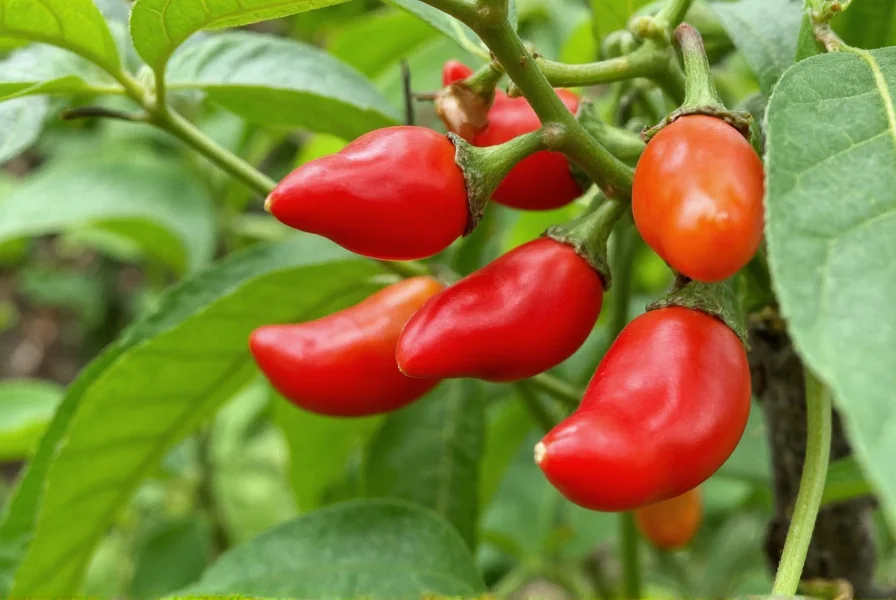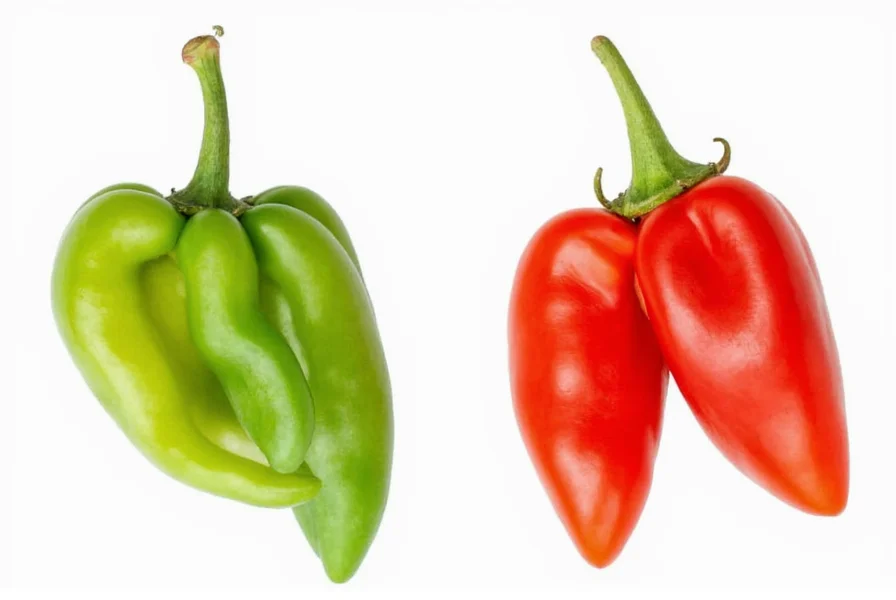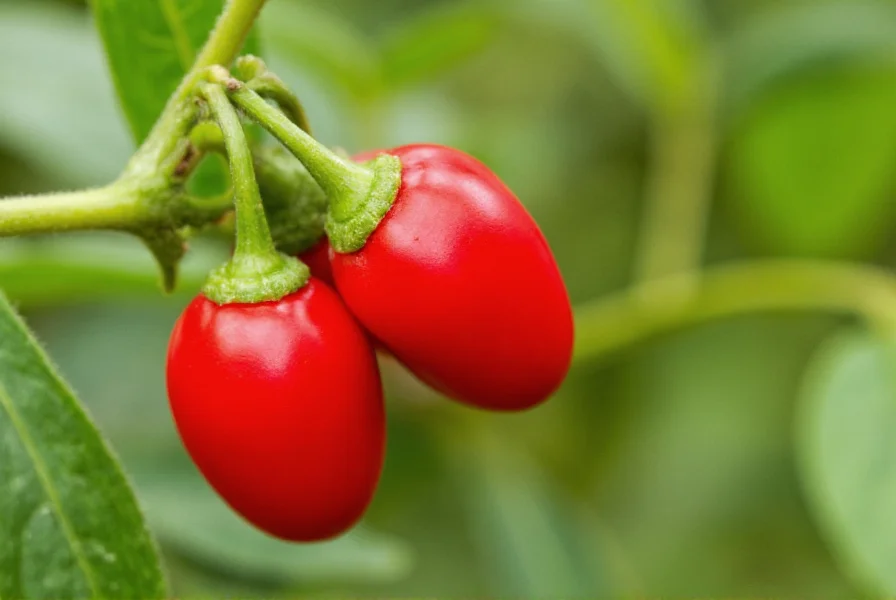Understanding the precise timeline for Big Red pepper development is essential for garden planning and harvest success. This popular bell pepper variety offers gardeners a reliable timeline for producing large, thick-walled fruits perfect for fresh eating, cooking, and preserving.
What Exactly Does Days to Maturity Mean?
When seed catalogs and gardening resources state that Big Red peppers require 75 days to maturity, this refers to the period from transplanting seedlings into the garden until the peppers reach their full size and develop their characteristic deep red color. It's crucial to distinguish this from days to germination or days from seed.
Many gardeners make the mistake of counting from when they plant seeds indoors, which adds approximately 6-8 weeks to the total timeline. For accurate planning, remember that the 70-80 day maturity period begins when you transplant your seedlings outdoors after the last frost date in your area.
Big Red Pepper Growth Timeline Explained
Big Red peppers follow a predictable growth pattern that helps gardeners anticipate harvest time. Understanding each stage provides valuable insight into what's happening beneath the surface and above ground.
| Growth Stage | Timeline | Key Characteristics |
|---|---|---|
| Transplanting to Garden | Day 0 | 6-8 inch seedlings with 2-3 sets of true leaves |
| Establishment Phase | Days 1-14 | Root development, minimal visible growth above soil |
| Vegitative Growth | Days 15-40 | Rapid leaf and stem development, flowering begins |
| Fruit Set | Days 41-55 | Small green peppers form after successful pollination |
| Fruit Development | Days 56-70 | Peppers grow to full size (3-4 inches), remain green |
| Ripening to Red | Days 71-80 | Color change from green to deep red, flavor development |
Factors That Influence Big Red Pepper Maturity Time
While 75 days represents the standard maturity timeline for Big Red peppers, several environmental and cultural factors can accelerate or delay harvest time:
- Temperature - Peppers thrive in warm conditions (75-85°F). Cool temperatures below 60°F significantly slow growth and delay maturity
- Sunlight exposure - Full sun (6-8 hours daily) produces fastest maturation; partial shade extends the timeline
- Soil quality - Well-draining, nutrient-rich soil with proper pH (6.0-6.8) supports optimal growth rates
- Water consistency - Irregular watering stresses plants and delays fruit development
- Fertilization practices - Balanced nutrition, particularly adequate phosphorus and potassium, promotes timely maturation
- Plant spacing - Overcrowded plants compete for resources, extending days to maturity
Maximizing Your Big Red Pepper Harvest Timeline
Gardeners can employ several proven techniques to ensure their Big Red peppers reach maturity as efficiently as possible while maintaining quality:
Start seeds indoors 8-10 weeks before your last expected frost date. This gives seedlings sufficient time to develop strong root systems before transplanting. Use biodegradable pots to prevent root disturbance during transplanting, which can set back growth by 1-2 weeks.
When transplanting, incorporate black plastic mulch or red plastic mulch into your garden beds. Research shows these materials increase soil temperature by 5-10°F, accelerating growth and potentially reducing days to maturity by 5-7 days. Alternatively, use fabric row covers during cooler periods to create a microclimate around your plants.
Consistent watering is critical—peppers need 1-2 inches of water per week. Drip irrigation systems deliver water directly to the root zone without wetting foliage, preventing disease and ensuring consistent moisture levels that support steady growth.

Recognizing When Big Red Peppers Have Reached Full Maturity
Many gardeners harvest Big Red peppers too early, missing the peak flavor and nutritional benefits that come with full maturity. Here's how to identify when your peppers have truly reached their 75-day maturity point:
- Color transformation - Fully mature Big Red peppers transition from dark green to a deep, uniform red color throughout the entire fruit
- Firmness - Mature peppers feel firm and solid when gently squeezed, with thick, crisp walls (approximately 1/4 inch thick)
- Size - Typically reach 3-4 inches in length and 3-3.5 inches in diameter at full maturity
- Shine - The skin develops a slight sheen when fully mature, indicating peak sugar content
- Stem attachment - The stem becomes slightly woody at the connection point to the fruit
While you can harvest Big Red peppers when they're still green (around 60 days after transplanting), allowing them to fully ripen to red significantly increases their vitamin C and beta-carotene content—up to 2-3 times more than green peppers of the same variety.
Common Mistakes That Extend Big Red Pepper Maturity Time
Several gardening practices inadvertently prolong the time it takes for Big Red peppers to reach maturity. Avoid these common pitfalls:
- Over-fertilizing with nitrogen - Excessive nitrogen promotes leafy growth at the expense of fruit development
- Improper pruning - Removing too many leaves reduces photosynthesis needed for fruit development
- Planting too early - Cold soil temperatures stunt growth and delay maturity by weeks
- Inconsistent harvesting - Not picking mature peppers signals the plant to slow production of new fruit
- Pest damage - Aphids, spider mites, and other pests stress plants and extend maturity timelines

Extending Your Big Red Pepper Harvest Season
Once your Big Red peppers reach maturity at approximately 75 days, you can extend your harvest period through proper plant management. These techniques help maximize your yield from each plant:
Practice regular harvesting every 2-3 days once peppers begin ripening. Removing mature fruit encourages the plant to produce more flowers and subsequent fruit sets. Use sharp pruning shears or scissors to cut peppers from the plant, leaving a small portion of stem attached to prevent damage to the plant.
As summer temperatures peak above 90°F, Big Red pepper plants may temporarily stop setting new fruit. Provide afternoon shade during extreme heat to maintain consistent production. When cooler fall temperatures return, the plants will often produce a second flush of flowers and fruit.
For gardeners in shorter season climates, consider using season-extending techniques like cold frames or high tunnels to protect plants from early fall frosts, potentially adding 2-4 weeks to your harvest window beyond the standard 75-day maturity period.
Planning Your Garden Around Big Red Pepper Maturity
Understanding the precise 70-80 day maturity timeline for Big Red peppers allows for strategic garden planning. Consider these scheduling tips:
- Count backward 75 days from your first expected fall frost date to determine your ideal transplant date
- Plant Big Red peppers alongside faster-maturing varieties (50-60 days) for earlier harvests
- Succession plant every 2-3 weeks for continuous harvest throughout the growing season
- Pair with companion plants like basil, which may enhance flavor and deter pests
- Rotate planting locations annually to maintain soil health and prevent disease buildup
By aligning your gardening calendar with the specific maturity requirements of Big Red peppers, you'll optimize your harvest timing and yield while avoiding the disappointment of immature fruit at season's end.
How many days to maturity for Big Red peppers from seed?
Big Red peppers require approximately 120-130 days from seed to full maturity. This includes 45-50 days for seed starting indoors plus the standard 70-80 days to maturity after transplanting outdoors. Most gardeners start seeds indoors 8-10 weeks before their last frost date to ensure plants are ready for transplanting when weather conditions are favorable.
Can Big Red peppers mature faster in warmer climates?
Yes, Big Red peppers can reach maturity in as few as 70 days in consistently warm climates (75-85°F daytime temperatures). The ideal temperature range for pepper growth is 70-85°F. In these conditions with proper soil warming techniques like black plastic mulch, maturity time can be reduced by 5-7 days compared to standard growing conditions.
What happens if I harvest Big Red peppers before they turn red?
Harvesting Big Red peppers while still green (around 60 days after transplanting) is possible, but they'll have a more bitter flavor and contain significantly less vitamin C and beta-carotene. The full red color develops during the final 15-20 days of the 75-day maturity period, when sugar content and nutritional value peak. Green Big Red peppers will continue to ripen off the plant but won't develop the same flavor complexity as vine-ripened fruit.
How do I know when my Big Red peppers have reached full maturity?
Fully mature Big Red peppers display several key indicators: deep, uniform red color throughout the fruit; firm texture with thick walls (about 1/4 inch); glossy skin surface; and a slight woody texture at the stem attachment point. They typically reach 3-4 inches in length and 3-3.5 inches in diameter. The most reliable indicator is consistent color change from green to red across the entire pepper, which occurs during the final stage of the 70-80 day maturity timeline.
Why are my Big Red peppers taking longer than 75 days to mature?
Several factors can extend Big Red pepper maturity beyond the standard 75 days: cool temperatures below 60°F, inconsistent watering, nutrient deficiencies (particularly phosphorus and potassium), insufficient sunlight (less than 6 hours daily), pest damage, or overcrowded planting conditions. Excessive nitrogen fertilizer can also delay maturity by promoting leafy growth at the expense of fruit development. Check your growing conditions against these common issues if your peppers are maturing slower than expected.











 浙公网安备
33010002000092号
浙公网安备
33010002000092号 浙B2-20120091-4
浙B2-20120091-4